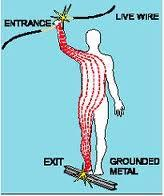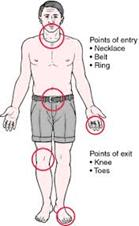An Introduction to Electrical Safety
All hazards which we face in our daily life at home, at school or at work there is probably none as dangerous and uniquely unforgiving as electricity. Life without electricity is Unimaginable, but peculiarity is that it is not visible but it strikes very hard; killing, disfiguring or disabling.
Why we should care about Electrical Safety?
In our “construction industry” presence of electricity is even more problematic as construction involves usage of temporary installations & supply of Electricity, which involves typical inherent risk and hence calls for strict standard engineering practices.
What is Electrical Shock?
An electrical shock is received when electrical current passes through the body. Person will get an electrical shock if a part of body completes an electrical circuit by touching a live wire and an electrical ground, or touching a live wire and another wire at a different voltage.
Facts you should know about Electric Shocks:
- Electricity always tends to flow to the ground and takes shortest easy conducting path.
- Difficult to tell when contact with electricity will be fatal, but surely it will always hurt.
- Electric shock can cause injuries from minor to severe nature such as muscle spasms, weakness, shallow breathing, rapid pulse, severe burns, unconsciousness, or death.
- In an electrocution incident, the path that electric current takes through the body gets very hot. Burns occur all along that path, including the skin.
It's not only giant power lines that can kill or injure, one can also be killed by a shock from an appliance or power cord in your home.
Effect of Current on Human Body

| Mill amperes) Current level | Probable Effect |
| 1mA | Perception level. Slight tingling sensation. Still dangerous under certain conditions. |
| 5mA | Slight shock felt; not painful but disturbing.Average individual can let go. However strong involuntary reactions to shock in this range may lead to injuries |
| 6mA – 16mA | Painful shock, begin to lose muscular control. Commonly referred to as the freezing current or "let-go" range |
| 17mA - 99mA | Extreme pain, respiratory arrest, severe muscular contractions. Individual cannot let go. Death is possible |
| 100mA– 2,000mA | Ventricular fibrillation (uneven, uncoordinated pumping of the heart.) Muscular contraction and nerve damage begins to occur. Death is likely. |
| 2,000mA | Cardiac arrest, internal organ damage, and severe burns. Death is probable. |

| Electrical Current Affects the Human Body | Other factors that may affect the severity of the shock are: |
| Amount of current flowing through the body (Amp) | Voltage of the current. |
| Path of the current through the body | Presence of moisture in the environment |
| Length of time the body is in the circuit. | Phase of the heart cycle when the shock occurs. |
| General health of the person prior to the shock. |
No comments:
Post a Comment